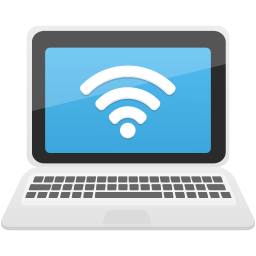A quick reference to help you troubleshoot connection and device set-up problems, when you are helping a learner remotely.
Tips for helping someone to set up a device remotely
If your learner’s device is not set up to access the internet you may need to start by helping them to set it up over the phone. Helping someone on the phone can take a while, so be patient!
Be prepared!
Practice on the same device as them, and if possible have it open as you talk to them.
Be flexible!
- Get them to describe what they are seeing and then use the same terminology as them.
- Break tasks down into easy steps.
- Go slowly. If it feels like you aren’t making much progress, see if they have a friend or relative that might be able to sit in on the call.
- Give them time to take notes and practice, if they need to.
Alternative approaches
If it is difficult to explain everything on the phone, you could also try:
- Making your learner a demo video or sending them a handout.
- Using WhatsApp video or Facetime imaginatively! You can get them to point the camera at their laptop and then you can see what they are doing.
As a last resort you may need to arrange a face-to-face meeting initially to get the device set up.
Useful links:-
- Unboxing YouTube channel https://www.youtube.com/playlist?list=PLoNw8g0EEF7OWo2lsDIDmr2QM_qyfT6L6
- GCF Global smartphone and tablet tutorials https://edu.gcfglobal.org/en/topics/smartphonesandtablets/
Troubleshooting poor connectivity
If learner has a poor broadband connection, or is using mobile data, it might be hard for you to support them in a video call. If you are experiencing problems with delays, buffering or freezing in video calls you can try:
- Turning off any other devices on the network.
- Moving closer to a wifi signal or connecting to the router with a cable.
- Setting Zoom (or the video tool) to standard definition (rather than HD).
- Try turning off your videos.

If all else fails, then try restarting the meeting.
Useful links:-
- Troubleshooting a poor internet connection, Digital Unite https://www.digitalunite.com/technology-guides/using-internet/connecting-internet/troubleshooting-poor-internet-connection
- Getting the best value internet deal, Digital Unite https://www.digitalunite.com/technology-guides/using-internet/connecting-internet/getting-best-value-internet-deal
Sharing screens and troubleshooting technical problems
In video calling apps such as Zoom or Skype it is possible for both you and your learner to share your screens with each other. This is a great way to talk your learner through tasks. Try and get your learner to do things for themselves, whilst you talk them through it, this way they will be more likely to remember it next time!
For troubleshooting technical issues, or installing a bit of software, it may be easier for you to remotely control your learner’s device. Be cautious of doing this though, only use this option if it is absolutely necessary and you are confident in the task you need to do! The best app to use will depend on the type of devices you are both using. Many device types now have their own inbuilt tools. Options include Windows Quick Assist, Any Desk, Teamviewer and Zoom.
If you do choose to remotely access a learner’s computer then we would recommend that you are also on the phone or in video call to with your learner, so you can:
- Explain to them what you are doing and why.
- Let them know how they can end the remote access session at any point.
- Confirm any choices that come up on the screen and enter any necessary passwords.
Useful links:-
- How to troubleshoot a relatives computer, PC World https://uk.pcmag.com/laptops/132869/how-to-remotely-troubleshoot-your-relatives-computer
- Remote access in Zoom https://support.zoom.us/hc/en-us/articles/201362673-Requesting-or-giving-remote-control
Last updated August 2023